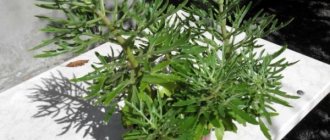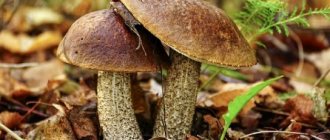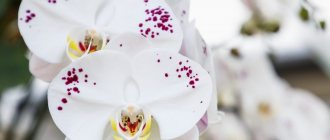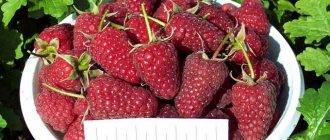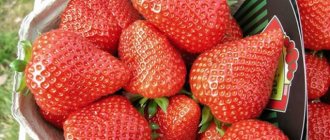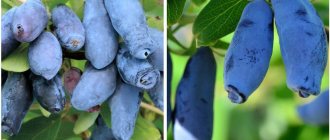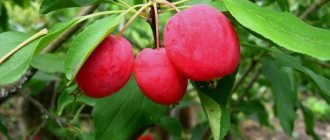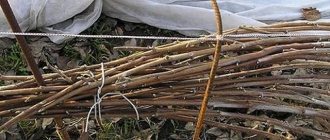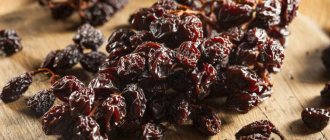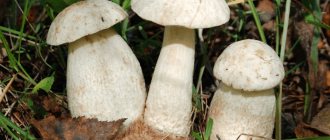Adromiscus types and varieties
Adromiscus crestata ( cristatus ) is a low succulent species that grows up to 10 cm. It has triangular, fleshy foliage with a wavy top that resembles a scallop. This species is easiest to grow indoors.
It has the shape of a Seyer with oval foliage of green-yellow color, the size of the bush of this variety is even smaller than that of the usual Comb.
Adromiscus Cooper is a bush up to 10 cm tall with unusual oblong foliage, the upper edge of which is also wavy, but not as pronounced as that of the Comb. The foliage, collected in a rosette, is decorated with red spots.
Adromiscus spotted is a low bush with poor branching. The foliage is round or slightly oblong, covered with spots. The flowers, which appear rarely, are burgundy in color.
Adromiscus Poellnitz shoots of this species are slightly more branched than their relatives. Its shoots are light green, convex, and become wider towards the top. The flowers are not particularly attractive.
Varieties of Adromiscus
There are several varieties of Adromiscus that successfully take root at home. Below is a brief description of each of them.
Adromiscus crest
Latin name: Adromischus cristatus. The average height of Adromiscus comb is only 15 cm. Erect young shoots gradually change shape and become drooping or creeping; numerous aerial roots of orange color are formed on them.
The surface of the plump and wide (up to 5 cm) leaves is covered with an edge, and they themselves form a leaf rosette. They are characterized by a dark green color and the presence of wavy edges. The flowers are painted in greenish-white tones and have a pink border along the edges of the petals.
Cooper's Adromiscus
Adromiscus Cooper: Photo of the variety
Latin name: Adromischus Cooperi. This variety of Adromiscus is also compact in size. Characterized by the presence of a short branching stem.
The color of the glossy oval-shaped leaves is quite unusual - their green surface is covered with numerous red-brown spots. The length of the leaves is 5 cm. The edges of the leaf blades are usually wavy.
During the flowering period, long inflorescences are formed, shaped like a spike. The flowers that make them up are tube-shaped and greenish-red in color with a border of pink, white or purple. The length of the flowers is about 1.5 cm.
Adromiscus Poellnitz
Adromiscus Poellnitz: Photo of the variety
Latin name: Adromischus poellnitzianus. This variety belongs to dwarf succulents - the average height of the bushes is no more than 10 cm. The pale green shoots branch, forming leaf rosettes.
The plates have a rather unusual shape: narrow and smooth at the base, they gradually expand and flatten. The edges of the leaf blades are usually wavy. Closer to the edge, the surface of the leaves is covered with whitish hairs. Long inflorescences consist of inconspicuous flowers.
Adromiscus spotted
Adromiscus spotted: Photo of the variety
Latin name: Adromischus maculatus. Another dwarf variety of Adromiscus, reaching a height of about 10 cm. Unlike previous species, it is weakly branched. Dark green rounded leaf blades are covered with red spots. The average length of the leaves is 5 cm, width - 3 cm. The most common shape is round or oval. The flowers are painted in red-brown tones.
Tripestilla Adromiscus
Latin name: Adromischus trigynus. This variety of Adromiscus is weakly branched and low, since the average height of the bushes is 10 cm. The leaf blades, as a rule, have a round or oval shape. The average length of dark green leaves is 4-5 cm, width - 3-4 cm.
Their surface is covered with brownish-red spots on the outer and inner sides. The flowers are colored the same shade as the specks.
Adromiscus tripistillate: Photo of the variety
Adromiscus care at home
Caring for the Adromiscus indoor plant is not particularly difficult, although it does have some peculiarities. This crop needs bright light, direct sunlight, and the brighter the lighting, the better the spots on the leaves will be expressed.
The temperature in summer is normal room temperature. In winter, the flower should be kept in a room with a lower temperature - 10-15°C. At this time, Adromiscus enters a period of rest, and it can withstand cold temperatures of up to 5°C.
Cotyledon is another representative of the Crassulaceae family, grown with care at home, attracting with its variety of varieties and very exotic flowering. You can find all the necessary recommendations for growing and caring for this succulent in this article.
Description of the plant
Adromiscus is translated as “thick stem” and belongs to the Tolstyankov family. The plant is most widespread in natural conditions in the south and southwest of Africa. It is a perennial herbaceous or subshrub plant with a creeping stem. The maximum height of the bush is 15 cm.
The stem often has a contrasting terracotta shade and is covered with aerial roots, so in the photo Adromiscus sometimes resembles small palm trees. Aerial roots are designed to obtain moisture and nutrients from the air. The roots of the plant are very thin, thread-like, and require special attention when transplanting and caring.
Adromiscus foliage is very thick, fleshy, and can have a solid green or variegated color. The leaves are round or triangular in shape and are attached to a dense, short petiole. The elongated leaves reach 5 cm in width and 1 cm in thickness. In some varieties, leaf rosettes are formed. Adromiscus blooms with white and pink tubular flowers. The spike-shaped inflorescence has a long, fleshy peduncle.
Watering Adromiscus
Adromiscus grows well in low humidity and does not need spraying.
It also does not need frequent watering. During active growth, the top ball of soil should have time to dry out between waterings. Taking this into account, they are held once every one and a half to two weeks. In November and February, watering is carried out no more than once every 30 days.
December and January are the times when you should avoid watering if you maintain the correct temperature regime for keeping the plant. Do not allow water to get into the leaf rosette, as this may cause rot.
Transplantation, nutrition and reproduction
A peculiarity of the species is its slow growth, so Adromiscus is usually replanted in the spring every two or even three years.
Usually a ready-made mixture is used for cacti and succulents. But if you want, you can make it yourself. To do this, take half of the leaf soil, mix it with half of the river coarse sand, add charcoal and brick chips. Before planting, it is important to fill the pot with a good layer of drainage.
For growth and development, Adromiscus is recommended to be fed once a month, but only from April to September. In other months you don’t have to worry about feeding.
They propagate, like most succulents, by stem or leaf cuttings.
A child who grew out of a leaf.
It should be noted that the original pattern on the mother leaves is not always preserved when propagated by leaves; in these cases, it is more reliable to use pieces of the stem.
Diseases and pests
If care is not taken with Adromiscus, various problems can arise.
rot appears , which primarily affects the roots. It is rarely possible to save a plant in such cases, so it is better to do as with many other succulents - turn the bush into cuttings.
- Yellowing of leaves and their subsequent falling off is most likely a consequence of their aging.
- If the foliage turns yellow and dries out , then this usually happens when water gets on it, causing a burn.
- Cracking of leaves is a consequence of insufficient watering.
- Rotting of the foliage can occur due to water getting into the outlet.
- Due to lack of lighting, the shoots begin to stretch , and the foliage loses spots .
Reproduction
The plant can be easily propagated using cuttings or individual leaves. Fallen leaves take root easily and begin to grow quickly.
It is better to propagate the flower in late spring.
To do this, you need to remove 3-4 old leaves near the top and put them on a sheet of newspaper to dry a little. Then place them on the surface of the ground with the petioles down. The tops can be placed on the edge of the pot or sprinkled with soil on top so that they are in a stable position.
Leaves should not be watered until roots appear.
Young shoots will form directly from the base of the leaves. Old leaves can be removed when they are completely withered and dry.
Adromischus SPHENOPHYLLUS - Adromiscus cuneifolia, Adromiscus Sphenophilus.
Description: The genus Adromiscus includes about 70 species of plants of the Crassulaceae family. Adromiscus grows in South and South-West Africa. The name of the genus is translated from Greek as “thick-stemmed.” Adromiscus are low-growing shrubs or perennial herbaceous plants with succulent, often variegated, spotted, sometimes pubescent leaves. The short, thick, recumbent stem is densely covered with rusty-red aerial roots that absorb moisture from the air. The flowers are collected in a spike-shaped raceme on a relatively long peduncle. The petals of the corolla partially grow together, forming a narrow tube.
The most popular species are those with red and dark green spots on the leaves, but with a lack of light these spots disappear. Like all Crassulaceae, Adromiscus are unpretentious and undemanding in care, in addition, they are rarely affected by pests.
Adromiscus cuneifolia is a weakly branched small succulent. The leaf plate can reach 5 centimeters in length and 3 centimeters in width.
Care: Prefers bright and sunny lighting. South, south-east, south-west windows without shading. In summer, a sunny balcony is desirable. The temperature is moderate, in winter it is advisable to keep it at 8-12°C.
In summer, Adromiscus is watered moderately, allowing the soil to dry out. The plant does not tolerate excess moisture even during the growth period. In winter, watering is stopped, subject to cold wintering. If the plant is kept at room temperature, water infrequently and carefully. The plant does not need spraying.
The substrate is an earthen mixture enriched with a large amount of sand. You can use the following soil recipe: garden soil, humus, coarse sand in a ratio of 2:2:3. It would be useful to add a little bone meal, eggshells, charcoal, and brick chips to the resulting substrate. It would not be a mistake if you use ready-made store-bought soil as a substrate for Adromiscus, the purpose of which is planting and replanting cacti and succulents of any kind. To prevent rot, the plant needs a very loose, well-drained substrate and a low pot (bowl). The soil is a mixture of leaf humus, sand and peat soil in equal parts. Good drainage is a must. They do not need frequent transplantation.
Fertilizing the soil under Adromiscus is done with a mineral concentrate for cacti and succulents. It can be purchased at a specialty store. The plant needs fertilizing throughout the entire growing season, that is, from March to September. On the contrary, it is of no use in the autumn-winter season. The frequency of applying fertilizer to the soil in spring and summer is once a month.
Reproduction: Seeds are sown in a shallow container superficially in a sandy substrate, having previously been mixed with its top layer. They are moistened with a spray bottle, covered with glass or film and germinated in the light at a temperature of 18-24°C. The seedlings need ventilation. It is necessary to avoid waterlogging and drying out of crops.
The cover is removed after germination. After two or three leaves appear, the seedlings are transplanted into separate pots. It takes more than 3 months to flower after the initial stem appears.
